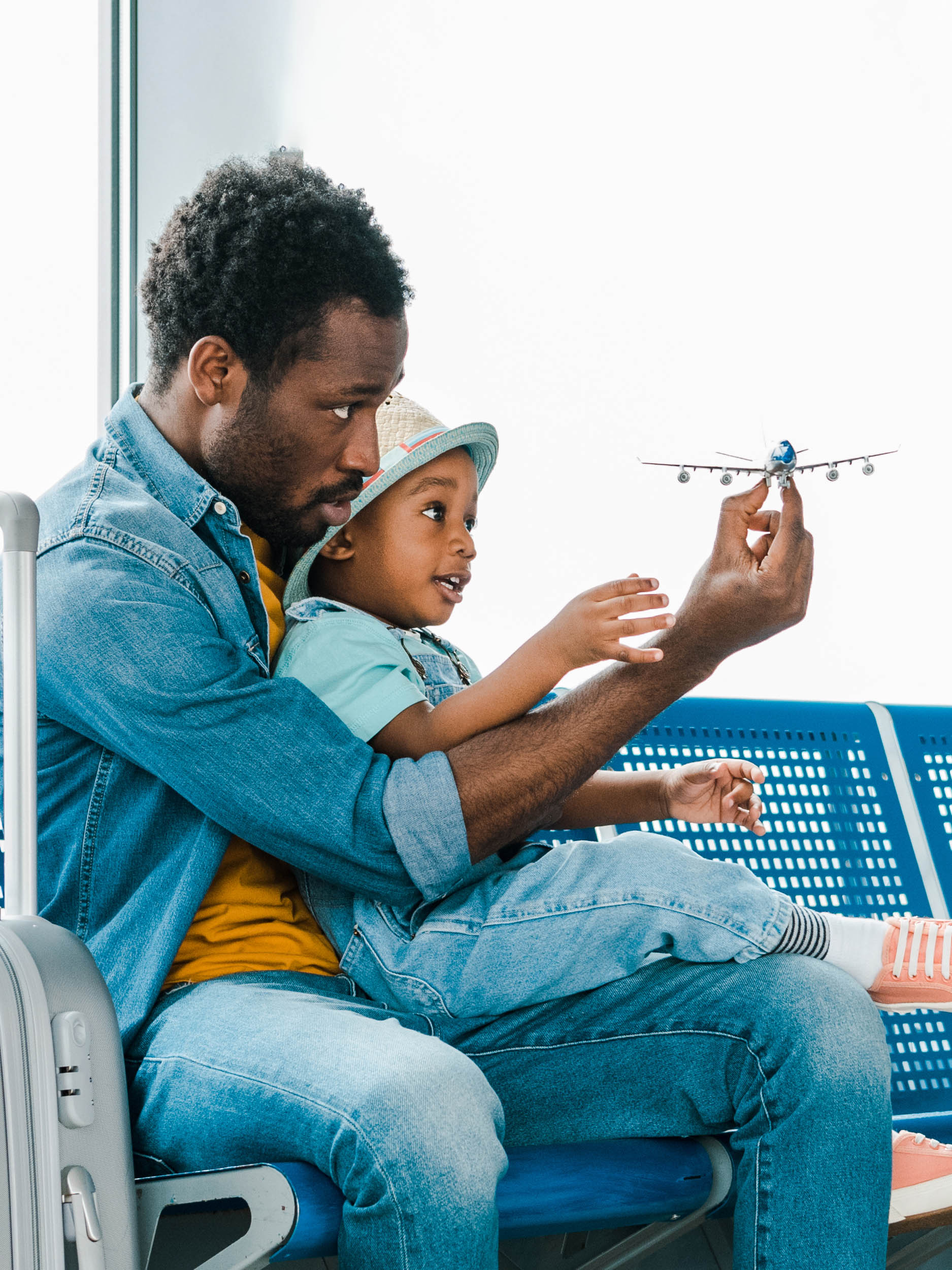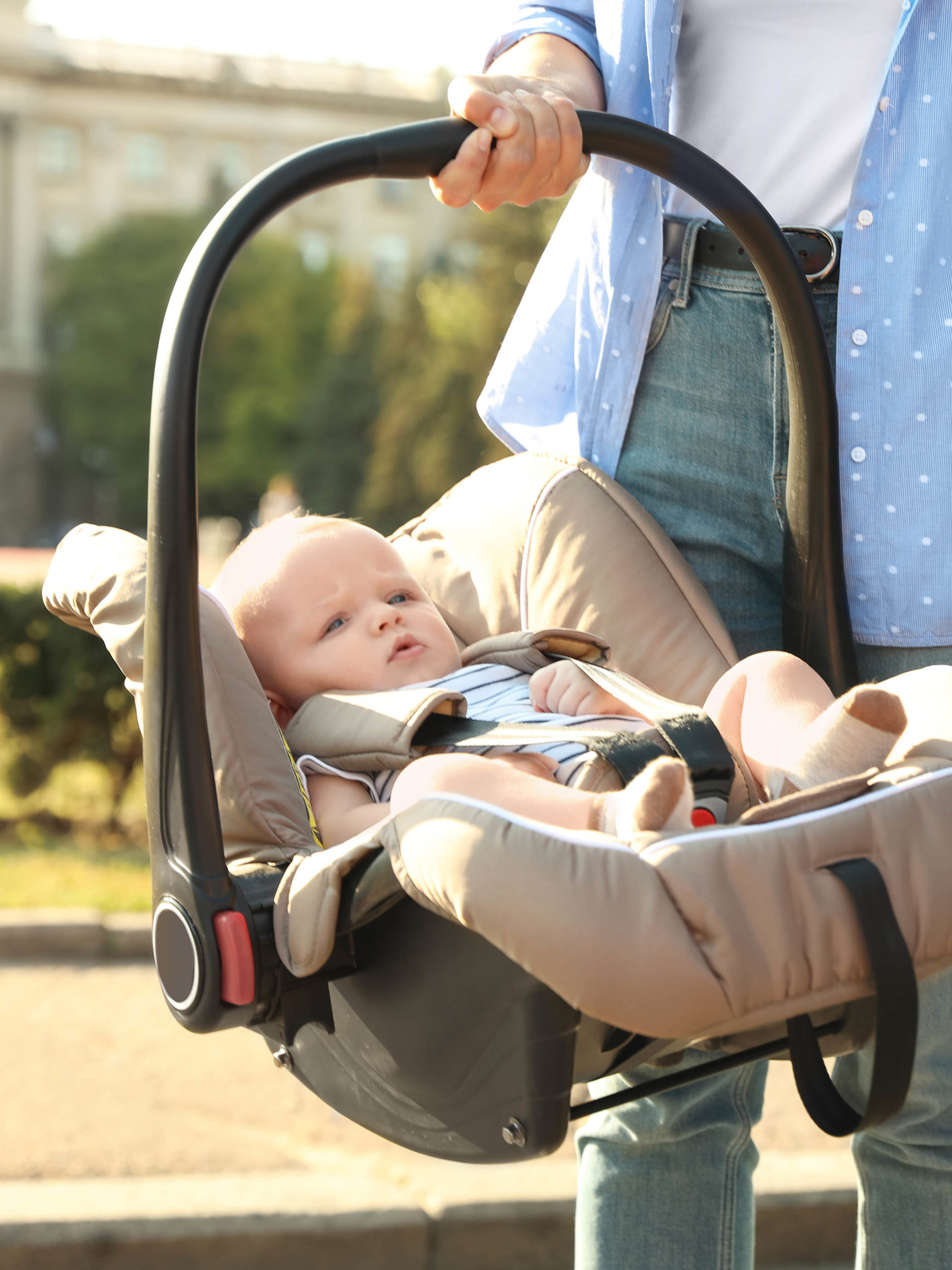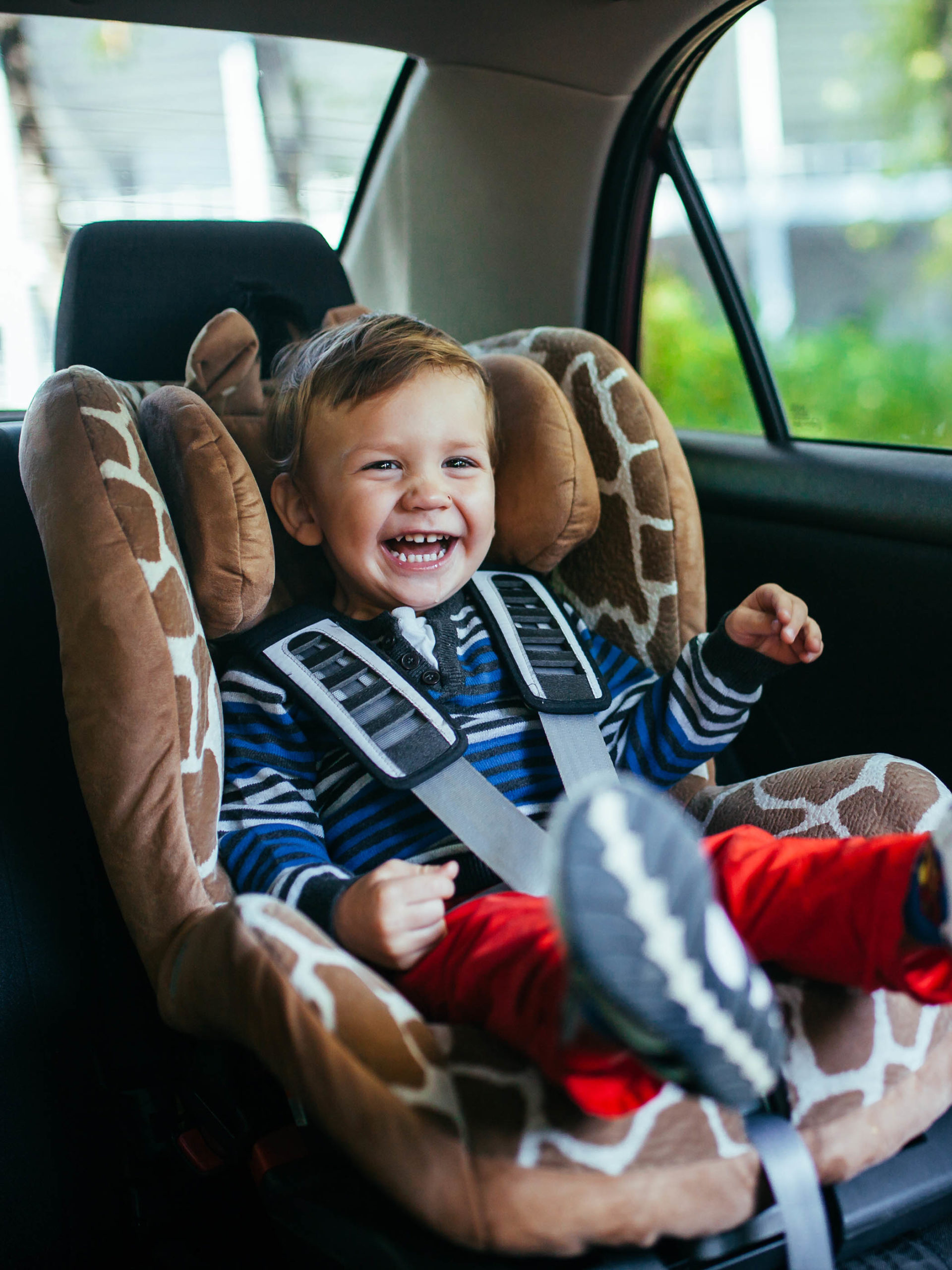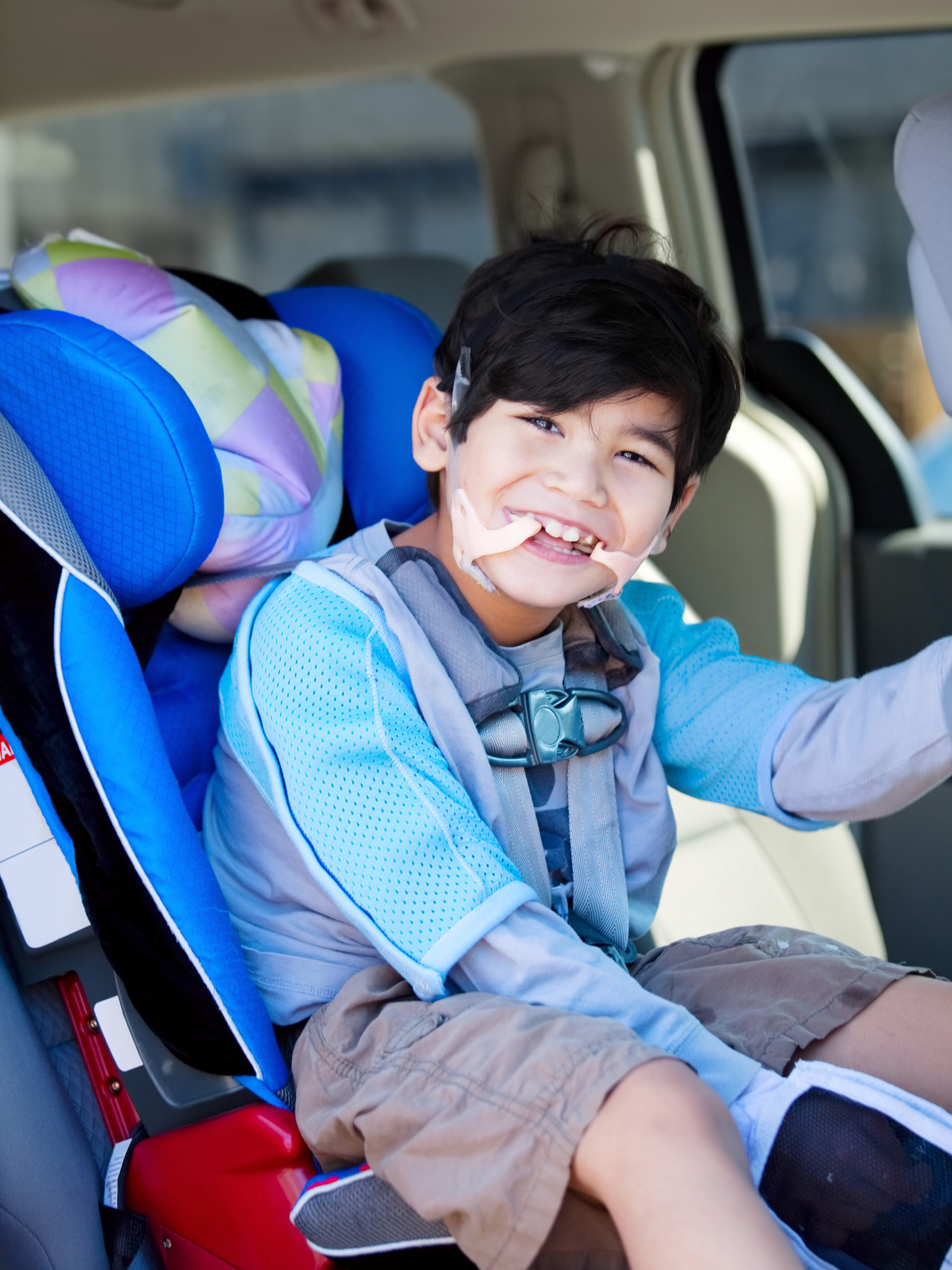SAFETY GUIDE
Car and Travel Safety
Motor vehicle crashes are the leading cause of death for children ages 1-14 in the United States.This guide from the pediatric safety experts at CHOC covers car seat safety for babies and young children as well as driving tips for teens so parents can keep kids safe while traveling.
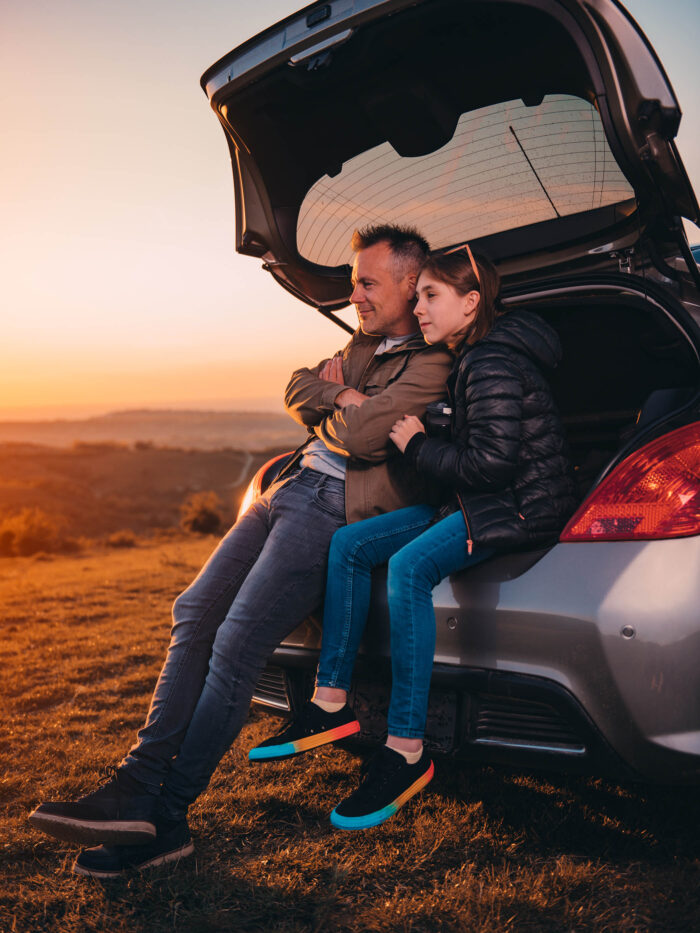
Safety Programs and Partners
Safe Kids Orange County
www.safekids.org
OC Injury Prevention Coalition
OC Drowning Prevention Task Force
drowningprevention.org
Stop the Bleed
stopthebleed.org
Car Safety: Overview
Keeping babies, kids, and teens safe in a car requires different measures depending on their age and size. Here are some general guidelines to follow:
For babies
- Use a rear-facing car seat until your baby is at least two years old or reaches the highest weight or height allowed by the car seat manufacturer.
- Make sure the car seat is properly installed and secured according to the manufacturer’s instructions.
- Place the car seat in the back seat of the car, away from any airbags.
- Never hold your baby in your lap while riding in a car.
For young children
- Use a forward-facing car seat for kids who have outgrown their rear-facing seat, usually around the age of two or until they reach the highest weight or height allowed by the car seat manufacturer.
- Use a booster seat once your child outgrows the forward-facing car seat, until they are big enough to use a seat belt properly, usually around the age of 8-12 or 4’9” in height.
- Make sure the car seat or booster seat is properly installed and secured according to the manufacturer’s instructions.
- Place the car seat or booster seat in the back seat of the car.
- Always use a seat belt if your child is old enough to sit in the car without a car seat or booster seat.
For Teens
- Make sure your teen is wearing a seat belt every time they are riding in a car, whether they are in the front or back seat.
- Encourage your teen to avoid distractions while driving, such as using their phone or eating.
- Limit the number of passengers in the car with your teen driver, as the risk of a crash increases with each additional passenger.
- Set a good example by wearing your own seat belt and practicing safe driving habits when you are behind the wheel.
Learn more about CHOC’s Pediatric Trauma Center
A traumatic injury can happen at any time: a car accident, a fall, an animal bite. CHOC is ready to treat traumatic injuries 24 hours a day. Critically injured children from across the region are transported and transferred to CHOC for the pediatric expertise only a level 1 pediatric trauma center can provide.
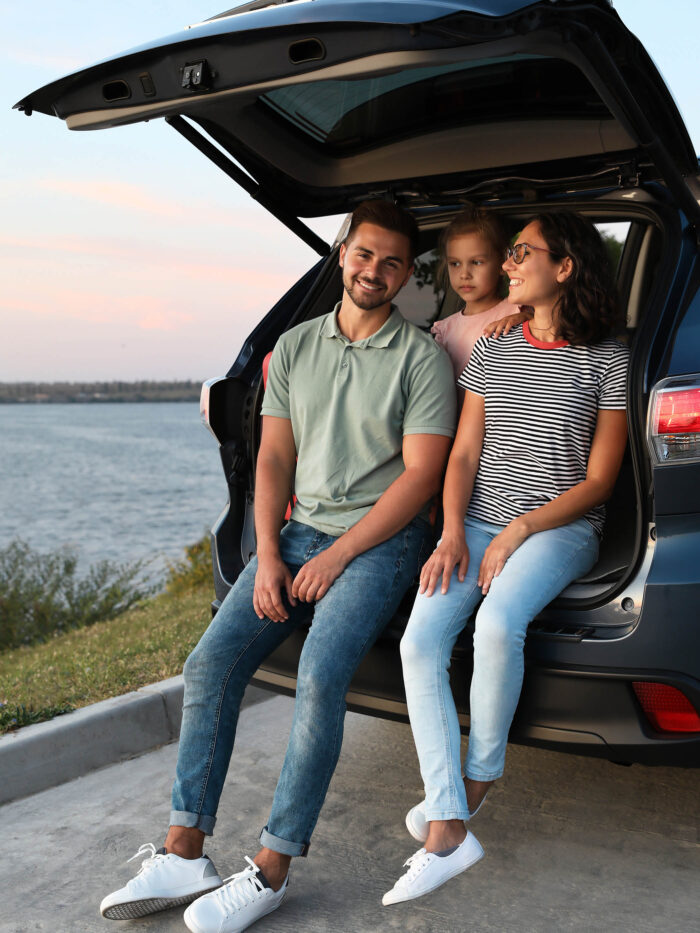
Passenger safety
Car seats and booster seats are the basic protection systems for passengers who are too small to get the full safety benefits from adult seat belts. Choosing the right seat is an important part of keeping your child safe on the road.
The best car seat for children
The best seat is one that:
- Fits your child: appropriate for the child’s age, height, weight and development level
- Fits in your vehicle
- Is in good condition: has not been in a crash, is not expired or recalled, and has no labels missing
- You can afford: inexpensive seats may meet the same national safety standards as their more expensive counterparts, but may not have the same comfort features
Remember to register your car seat to ensure you receive any relevant recall information from the manufacturer.
Refer to The Ultimate Car Seat Guide produced by Safe Kids, a nonprofit organization working to help families and communities keep kids safe from injuries, for personalized car seat tips based on your child’s age and weight.
To speak to an experienced child passenger safety technician, please call CHOC community education department at 714-509-8887.
When to turn car seat around based on height and weight
The direction your child faces in their seat matters. Many children move to the next seat stage before they are ready, potentially putting them at greater risk for injury in a crash.
Current California law requires children under age 2 to be rear-facing. This helps protect their developing fragile spinal cords during a collision by the seat absorbing the force of a crash, rather than the child taking the brunt of the impact. Keep your child rear facing as long as possible, until they reach the maximum weight or height limit of their seat. This could mean beyond two years old.
When can my child sit in the front seat in California?
The back seat is best for children under age 13. The back middle seat is the safest place for them because it will protect them from a crash and they won’t be injured by airbags. If you are unable to install a car seat in the middle seat, consider placing your child on the curb side, as opposed to the street side. Never place an infant carrier in the passenger seat, and always have children in booster seats use both the lap and shoulder belt.
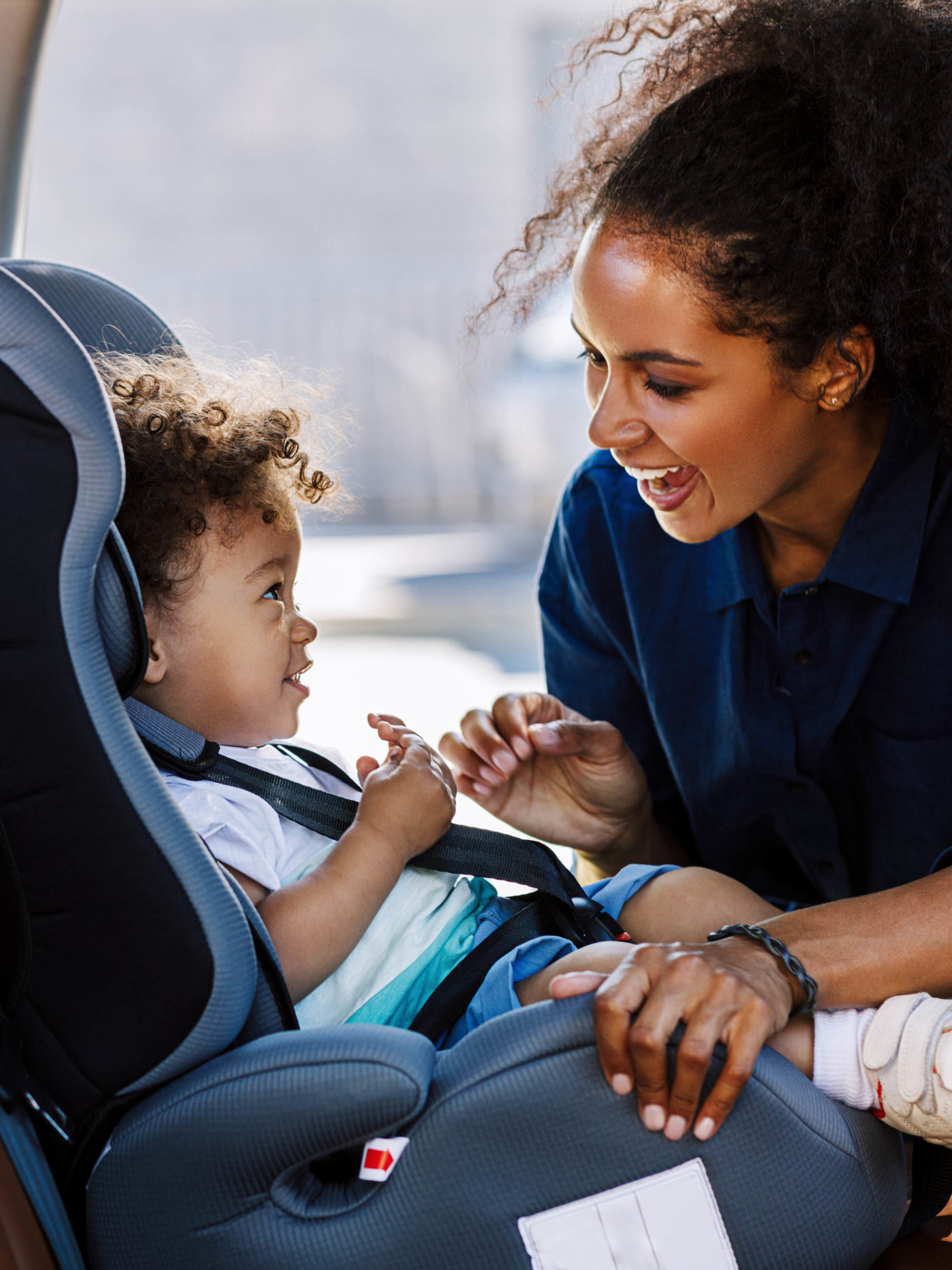
How to install a car seat safely
In the U.S., 59 percent of car seats are installed incorrectly. In Orange County, 98 percent of car seats inspected by Safe Kids’ Orange County chapter are misused. This may put your child at risk for injury in a crash.
What is the safest way to install a car seat?
Proper use of the harness or seatbelt ensures your child is securely positioned in a car seat, booster seat, or vehicle seat, and provide optimal protection in the event of a crash. Here are some helpful tips for adjusting the harness and seatbelt securely for your child.
| Do’s | Don’t’s |
| Do read and follow your car seat instructions and vehicle owner’s manual. | Don’t use the seat belt and the lower anchors together to install car seats. |
| Do use tether anchor for forward-facing car seats. | Don’t sacrifice the middle seat just because it doesn’t have a lower anchor system. Try using the seat belt for installation and make sure it doesn’t move more than 1 inch from the belt path. |
| Do lock the seat belt if you are installing your car seat with the seat belt and not the lower anchors. | Don’t use a lap-only belts for children using booster seats. Use a 3-point lap-and-shoulder belt to have full upper body protection. |
| Do the 5 Step-Test for your booster seat child to know if he or she is ready to ride without a booster. | Don’t ignore the labels on the car seats. |
| Do choose a car seat that you will correctly and consistently use | Don’t install a car seat in the front passenger seat. The back seat is the safest location for your child to ride. If there is no back seat, make sure to turn off the front passenger air bags. |
How to install a car seat rear-facing
Children in rear-facing car seats should have the harness straps at or below shoulder level. This ensures that your child doesn’t slide upwards in a crash.
How to install a car seat forward-facing
Children in forward-facing car seats with a harness must have the straps at or just above the shoulders.
Both forward-facing and rear-facing
- To ensure your harness is tightly adjusted, do the “pinch test” at shoulder level. If you can pinch any material of the harness at the child’s shoulder, it is still too loose.
- Avoid wearing thick, padded clothing when your child is in their car seat. Wearing them will prevent the harness from being effective in a crash because the padding will compress in an event of an impact which will cause injuries.
- The chest clip is at armpit level.
- Always buckle both the harness straps and the crotch belt buckle.
How to install a booster seats
- Always wear a lap AND shoulder seatbelt when your child is using a booster seat
- Do not transition your child out of the booster just because he is 8 years old. Use the 5-Step Test to determine if your child is ready to ride without a booster.

Car Safety Printable Tip Sheets
Print these tips sheets for quick and easy reference.
Brought to you by the pediatric experts at CHOC.
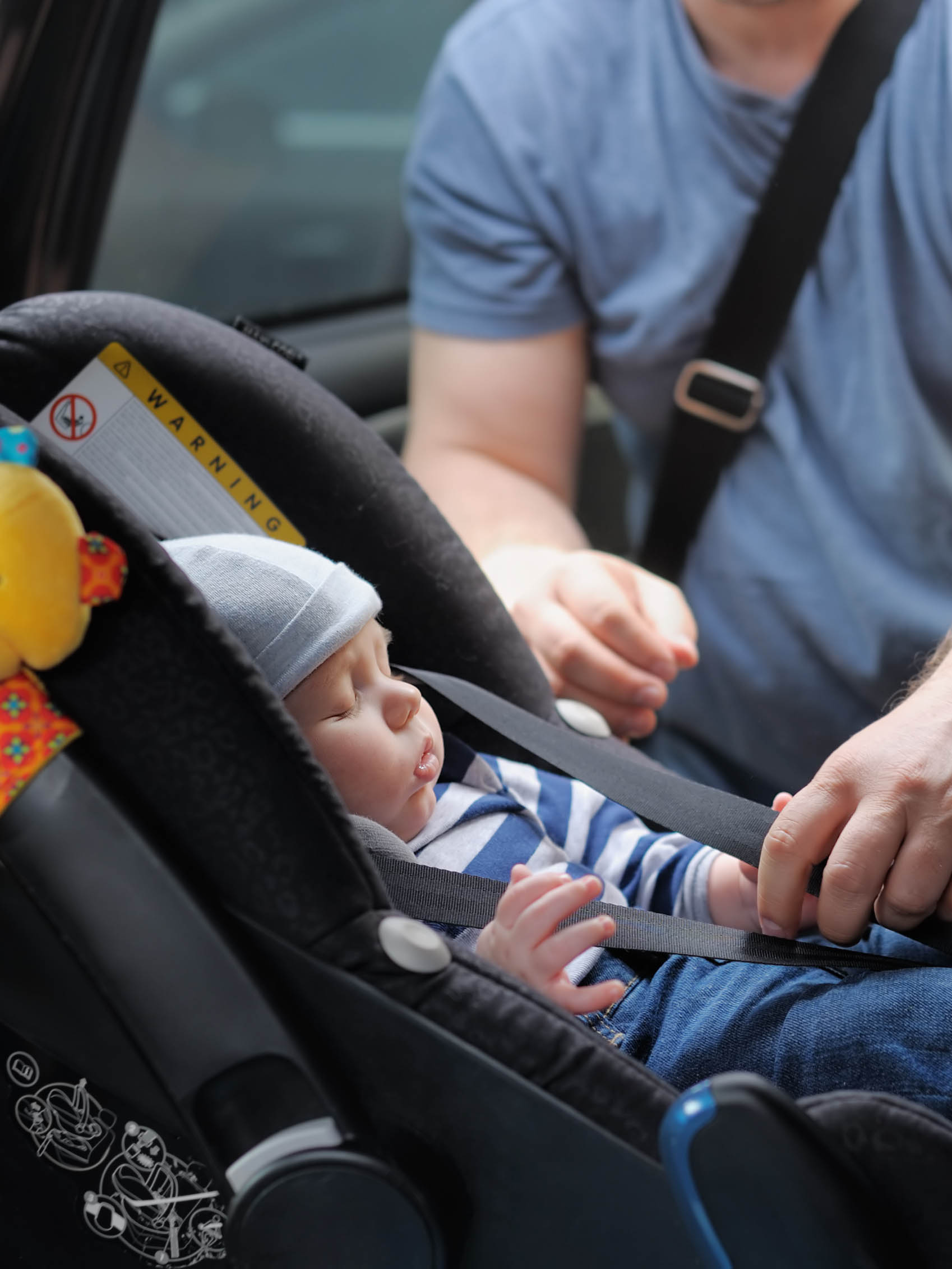
Child Passenger Safety
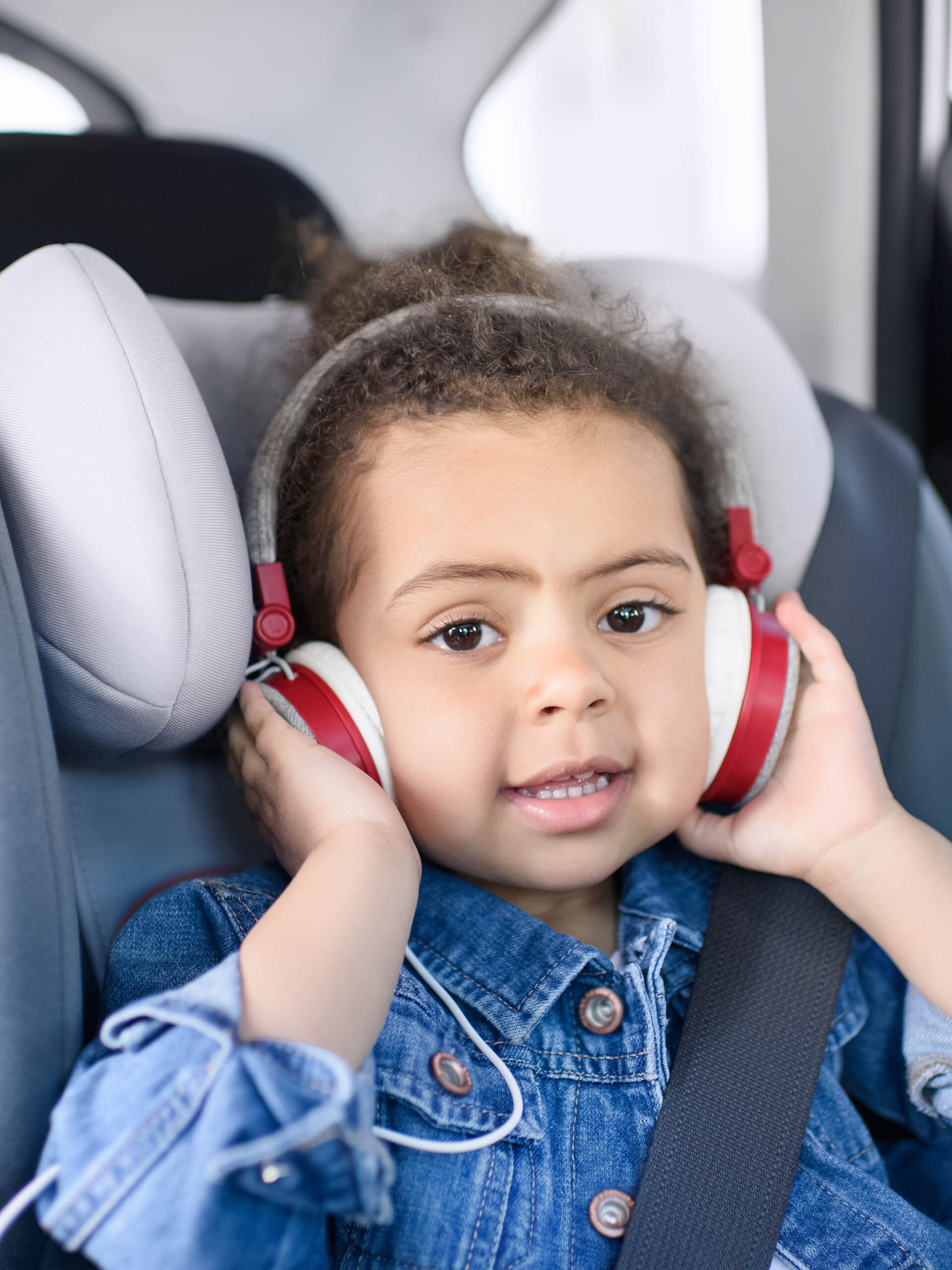
Información sobre la seguridad de los niños pasajeros

Teen Safety in the Car
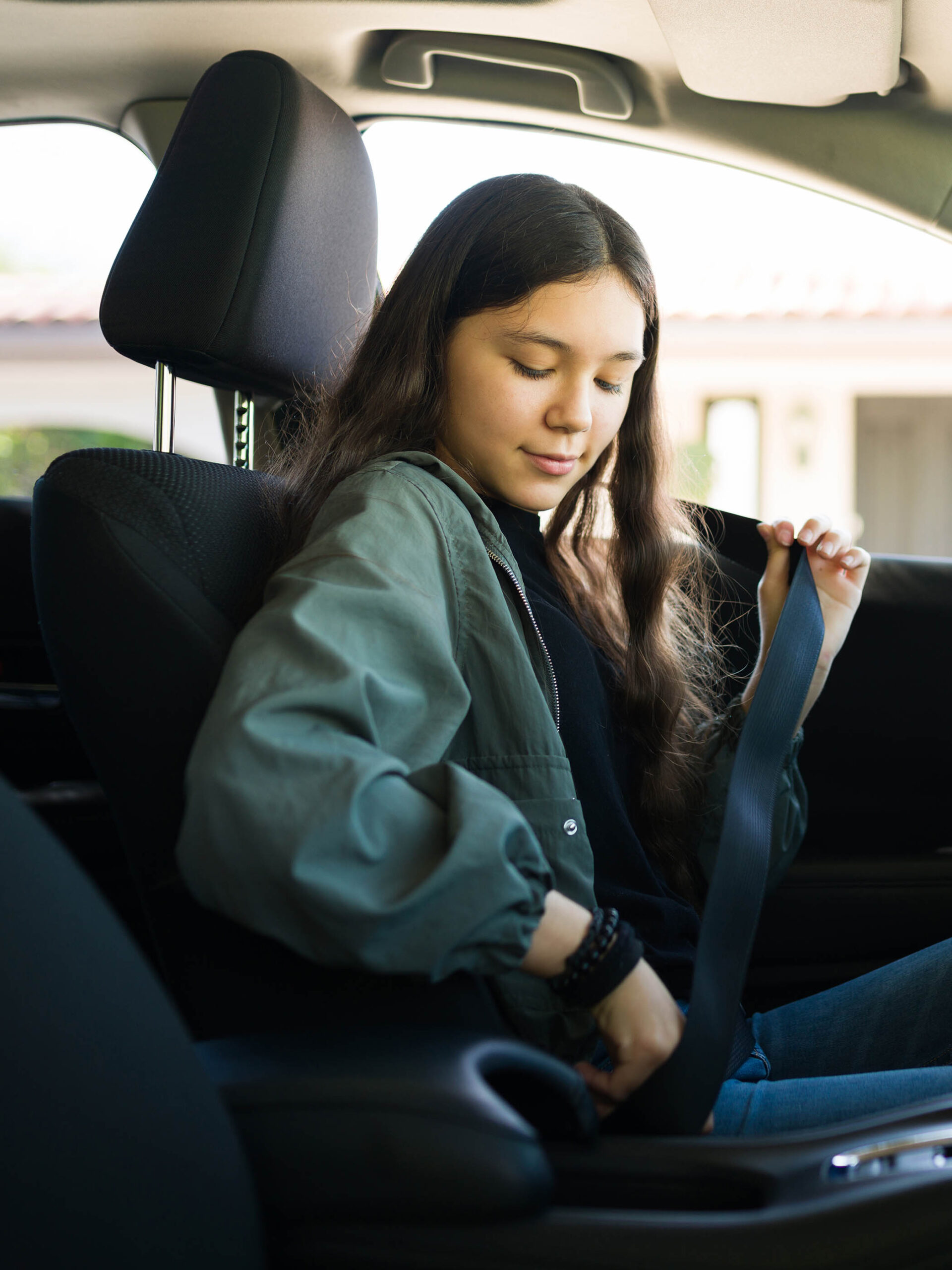
Información sobre la seguridad de los adolescentes en el automóvil

Car Seats for children with special needs
Traditional store-bought car seats may not work for children with certain conditions, and parents often must turn to specialty options that can be expensive with limited options. CHOC’s Community Education department can help families in these unique circumstances navigate the process of selecting and acquiring a car seat that fits their needs.
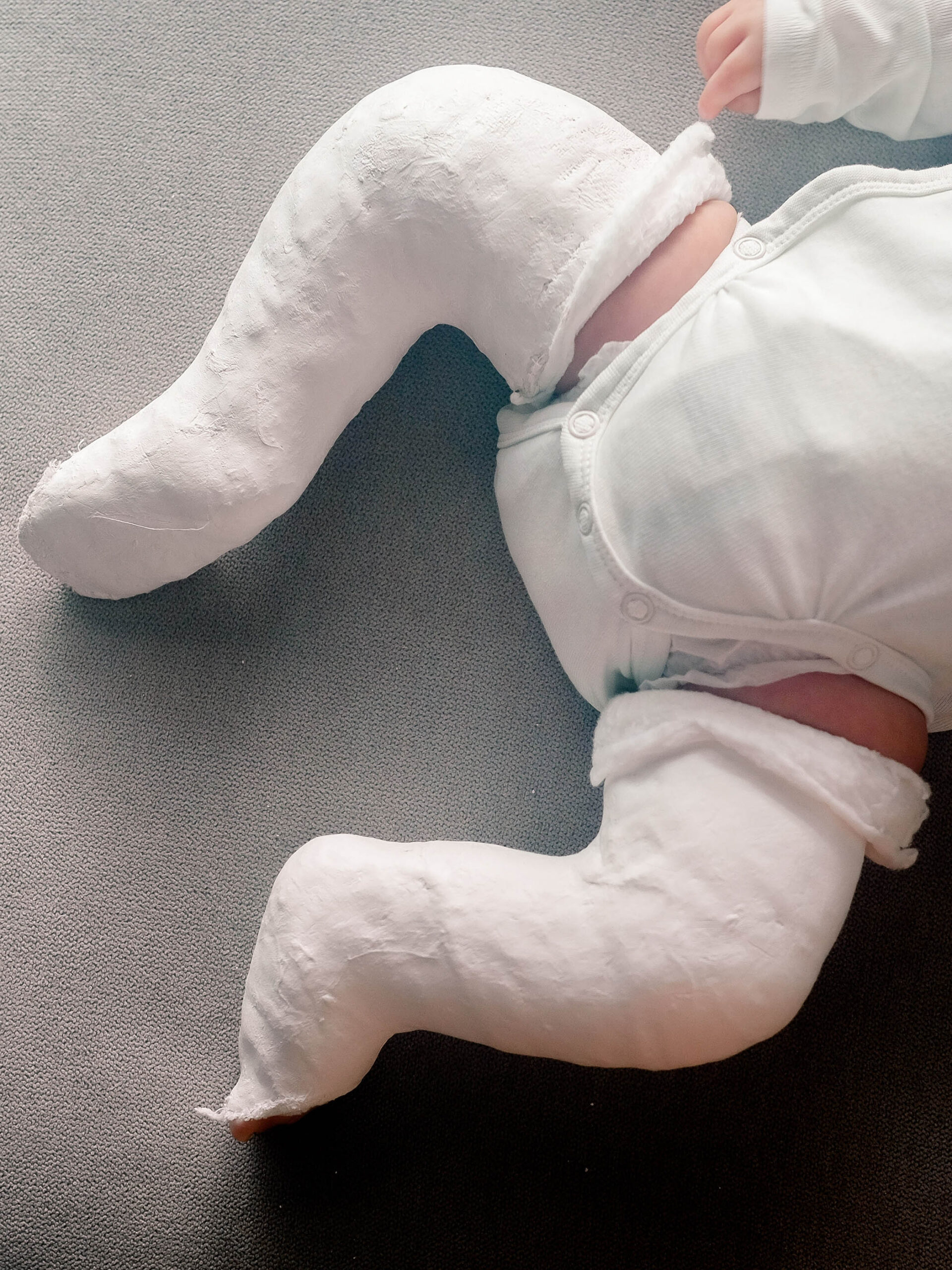
Car Safety for Children in Casts
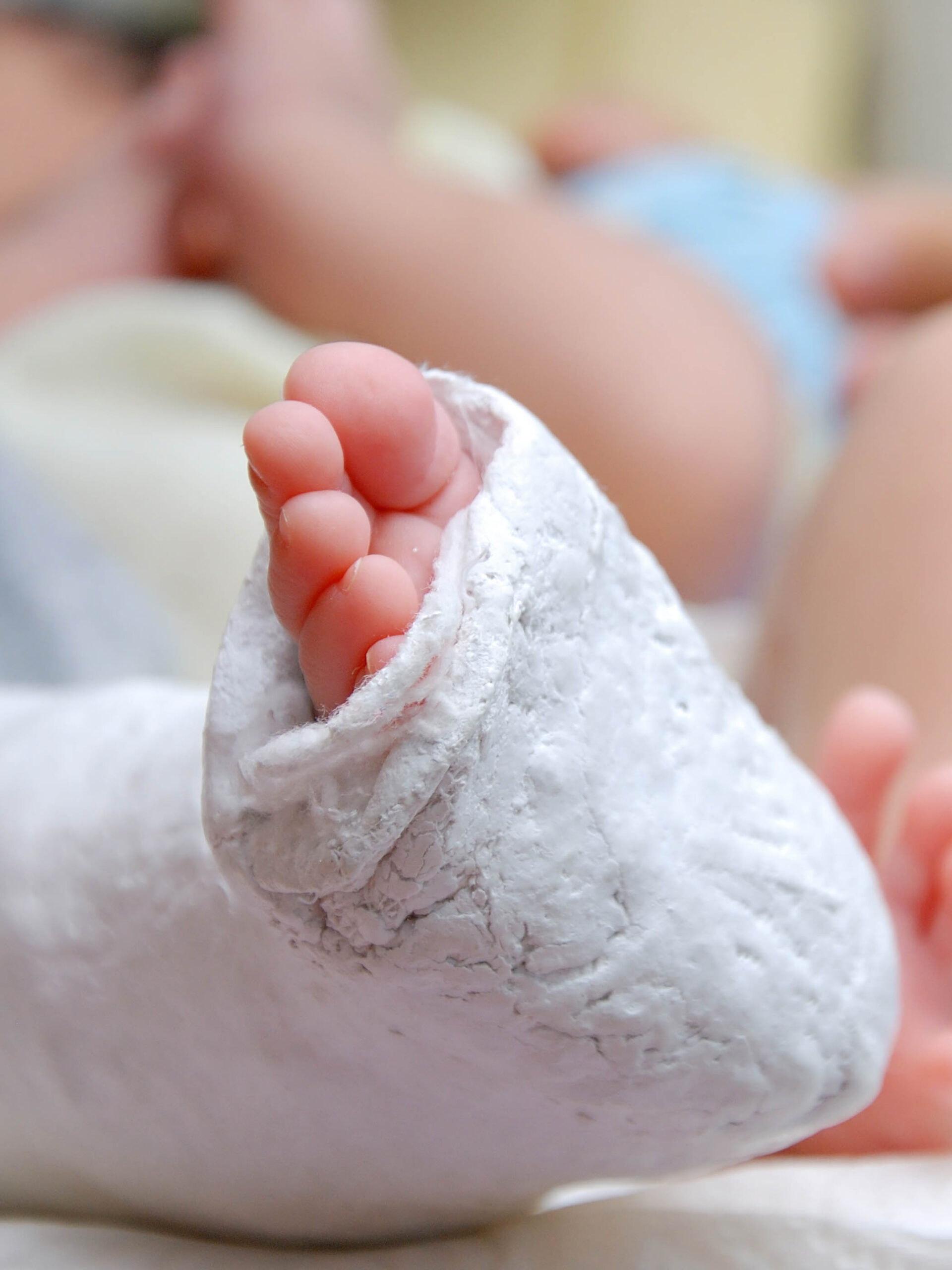
Información sobre la seguridad en los carros para los niños con yesos

Tips for teen drivers
Motor vehicle accidents are the number one cause of unintentional injuries in adolescents age 15-19. These accidents account for 36 percent of all deaths in this age group ― six teens die every day due to motor vehicle accidents. Summer months have the highest rates of teen fatalities throughout the year, but it’s not just teen drivers who are at risk; teen passengers are also at increased risk.
Why is teenage driving dangerous?
There are many factors unique to teens that put them at increased risk of having a car accident:
- Teens are inexperienced drivers and may not be able to recognize dangerous situations.
- Teens are also more likely to engage in risky behaviors such as speeding and leaving little room between themselves and the car in front of them (known as headway).
- Teens have the lowest rates of seat belt use.
- 40 percent of teens report texting while driving.
- The risk of being in an accident increases with the number of teen passengers.
According to the Centers for Disease Control (CDC), nearly one-third of traffic-related deaths occurred due to an alcohol-impaired driving crash. However, drugged driving is on the rise. A recent study found that the number of people killed in crashes where drugs were present surpassed the number killed in crashes where only alcohol was detected.
In 2014, the most recent data available, 209 child passengers ages 14 and younger died in alcohol-impaired driving crashes. More than half were riding in the vehicle with the alcohol-impaired driver.
Parent rules for teenage drivers
- Always wear your seatbelts.
- Follow the rules of the road.
- Never drink and drive. Never get into a car with someone who had a drink. Make sure you have a designated driver or someone you can call if you are stuck.
- Whether it be alcohol, marijuana or recreational drugs, impaired driving of any kind can be deadly.
- Remember that your texts can wait. Distracted driving is dangerous.
How can you help your teen be a safe driver? Keep in mind the following tips to support your teen and their safe driving habits:
- Before teens drive alone, supervise them driving during different times of the day and in different weather conditions.
- Lead by example. Wear your seatbelt and do not text and drive.
- Stress the importance of a good night’s rest as drowsy driving leads to accidents.
- Prohibit teen passengers for the first year your teen is licensed. In California, you cannot drive between 11 p.m. and 5 a.m. or transport passengers under 20 years old, unless accompanied by a California-licensed, parent or guardian, driver 25 years or older, or a driving instructor.
- Talk to your teen about drugs and alcohol. Discuss the dangers of impaired driving and distracted driving.
- Sign a parent-teen driving agreement. The CDC has a template, or you can make your own.
Learn more about CHOC’s Pediatric Trauma Center
A traumatic injury can happen at any time: a car accident, a fall, an animal bite. CHOC is ready to treat traumatic injuries 24 hours a day. Critically injured children from across the region are transported and transferred to CHOC for the pediatric expertise only a level 1 pediatric trauma center can provide.
Car and Travel Safety Resources
Safety guides
- Bike and helmet safety guide
- Car and travel safety
- Sun safety and skin protection guide
- Home and window safety guide
- Water safety and drowning prevention
Additional Resources
Safety Education Classes
CHOC’s community education department offers a variety of classes and programs designed to keep you and your child safe and healthy, including:
- School programs that can be brought to your school or group at no cost
- Safe Sitter, a nationally accredited childcare course
- “Three Tragic Seconds” drowning prevention program
- Child passenger safety class
The guidance on this page has been clinically reviewed by CHOC pediatric experts.
For more health and wellness resources from the pediatric experts at CHOC:
Sign up for the Kids Health newsletter.
The contents of this webpage, including text, graphics, audio files, and videos (“Materials”), are for your general information only. The Materials are not intended to substitute qualified professional or medical advice, diagnoses, or treatments. CHOC does not recommend or endorse any specific tests, physicians, products, procedures, or other information that may be mentioned on or linked to this webpage. Always call your physician or another qualified health provider if you have any questions or problems. If you think you may have a medical emergency, call your doctor, go to the nearest emergency department, or call 911.
For more health information for your family visit health.choc.org



